Have you ever been to Strasbourg in France? Whilst staying with my parents in Germany recently, we decided to take a little day trip to Strasbourg. It was less than two hours’ drive from there, making Strasbourg a perfect day trip destination. So, how about I tell you what to see in Strasbourg in a day?
Growing up in Palatinate in Germany, the German-French border wasn’t far and we would occasionally go for a little shopping trip in a French supermarket. Or for the odd day trip to Strasbourg. However, since moving to the UK, I haven’t been to Strasbourg (apart from a quick drive by for work). In fact, the last time I’ve visited Strasbourg for a day of sightseeing was 17 years ago. So, it was definitely time for another day trip to Strasbourg during our summer holiday.
Before I tell you what to see in Strasbourg (or at the very least what we managed to see in Strasbourg during our day trip), let me tell you a little about Strasbourg itself.
Strasbourg: the Stats
Located close to the French-German border, Strasbourg is the capital of the ‘Grand Est’ region of France. It used to be the capital of Alsace until a few years ago, when Alsace merged with Champagne-Ardenne and Lorraine to form the Grand Est region.
Strasbourg as a city has just under 300.000 inhabitants, however the metropole region of Strasbourg counts close to 1 million, making it the eight-largest region in France.
Strasbourg is situated next to the river Rhine (which forms the border to Germany) and its old town centre sits on the Grande Île (the big island) within the river Ill.
Day trip to Strasbourg: how to get there
Although Strasbourg has its own airport, there aren’t many international flights. If visiting Strasbourg by plane, you might be better off flying to one of the surrounding towns/countries and taking a train.
If you are thinking of a day trip to Strasbourg whilst holidaying in Paris, you can get there in under two hours by train. Perfect.
Alternatively, you could fly into one of the international airports in Basel (Switzerland), Stuttgart (Germany) or Luxembourg and take a train from there.
When travelling by car, you might be best advised to park outside Strasbourg on one of the park + ride car parks and take the tram into Strasbourg. Something we didn’t do. We saw the signs for park + ride and decided we couldn’t be bothered. However, we soon learned that our convenience came at a price, i.e. high parking charges in Strasbourg city centre. The first car park we found charged 35 Euros for a 3 hour stay. Needless to say, we decided to give that one a miss and continue our search. In the end we paid around 18 Euros for a six hour stay. Still not cheap, but definitely better. Had we parked at one of the P+R car parks, we would have paid just over 4 Euros for the day, including the return tram ticket. Lesson learned for next time.
If you are planning on driving into Strasbourg, please be advised that plenty of French cities (Strasbourg included) have environmental restrictions in place and you might need a ‘Crit’Air’ badge when entering Strasbourg. Whilst the badge only costs a few Euros, you will need to order ahead, if you are planning a day trip to Strasbourg.
What to see in Strasbourg
OK, enough of the pre infos, how about I actually tell you what there is to see in Strasbourg. And what we’ve been up to during our Strasbourg day trip.
To make the most of our day in Strasbourg, we left early in the morning, arriving in Strasbourg around 9.30.
As I have mentioned already, we parked our car centrally and were therefore able to walk all sights. Obviously, if you park further outside, you will need to rely on public transport to get around town. But Strasbourg has a very futuristic looking modern tram network, so that isn’t a problem. And at 6.90 Euro for a day ticket for up to 3 people, public transport in Strasbourg definitely is a bargain.
But before we even thought about sightseeing in Strasbourg, we decided to start our day with a French petit déjeuner. I mean, how could one go to France and not have French pastries? The pain au chocolat was still warm and worth every single calorie.
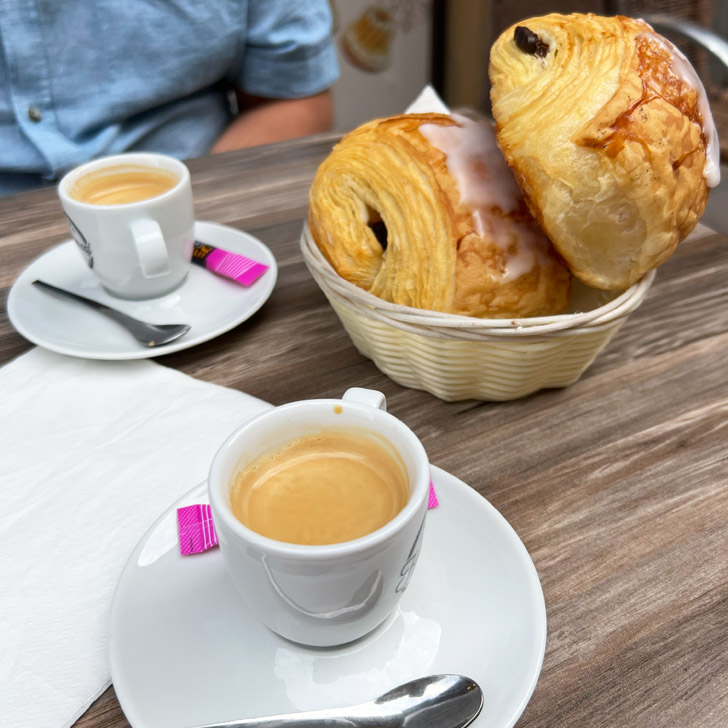
Caffeinated and fed, we were finally ready to start our day and explore what Strasbourg had to offer.
What to see in Strasbourg: The Cathedral
So first up was the Strasbourg Cathedral (or Cathédrale Notre-Dame de Strasbourg as it is officially known). I’ve walked past it on previous visits, but this was the first time I actually went into the cathedral itself.
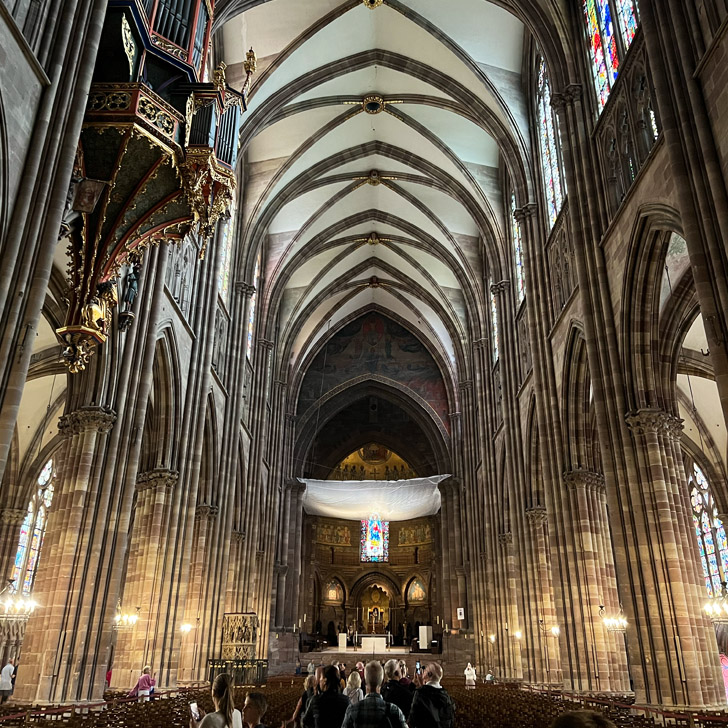
At 142m, Strasbourg Cathedral is one of the highest churches in the world
Originally built in the 11th + 12th century as a Romanesque cathedral, it burned down a few times and was eventually rebuilt in Gothic style.
Today, you can still see the Romanesque choir (albeit with newer stain windows) and a few Romanesque columns. But the bulk of the Cathedral, including its North tower and nave is Gothic.
When approaching Strasbourg Cathedral, you will probably notice its asymmetric front. It was originally supposed to have two towers, but only the North Tower was ever built.
Have a look at the beautiful rose window above the main entrance before you enter the cathedral.
Once inside, take your time and look around. On your left (along the North facade) you can see the five Emperor windows. These stained windows date back to the 12th century and were installed in the original Romanesque cathedral (and kept during the Gothic re-build).
Don’t forget to look up to see the grand organ.
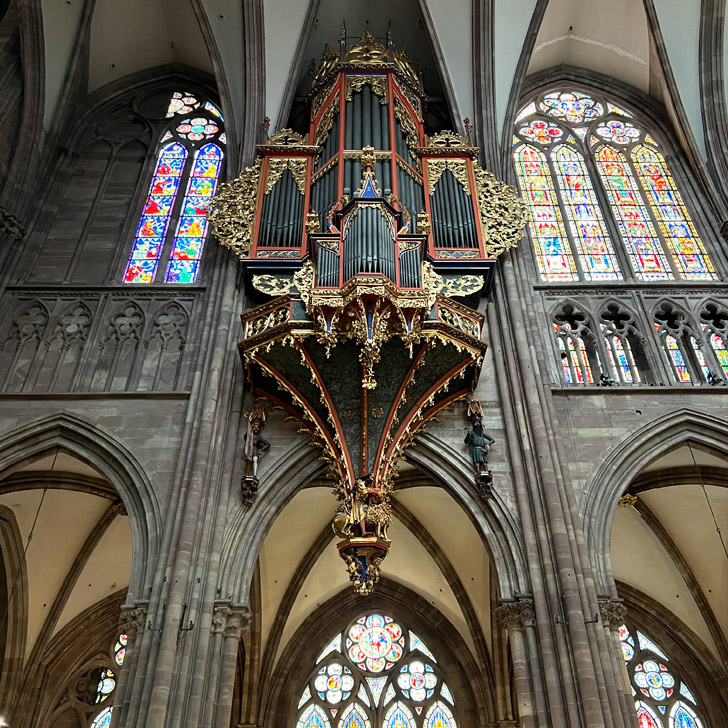
As you go down the nave, you will eventually arrive at the astronomical clock in the South Transept. This is actually the third astronomical clock in Strasbourg Cathedral, the first was installed way back in the 14th century. This current one dates from the 1840s. Unfortunately we missed visiting to the full hour, so we did not see it in action.
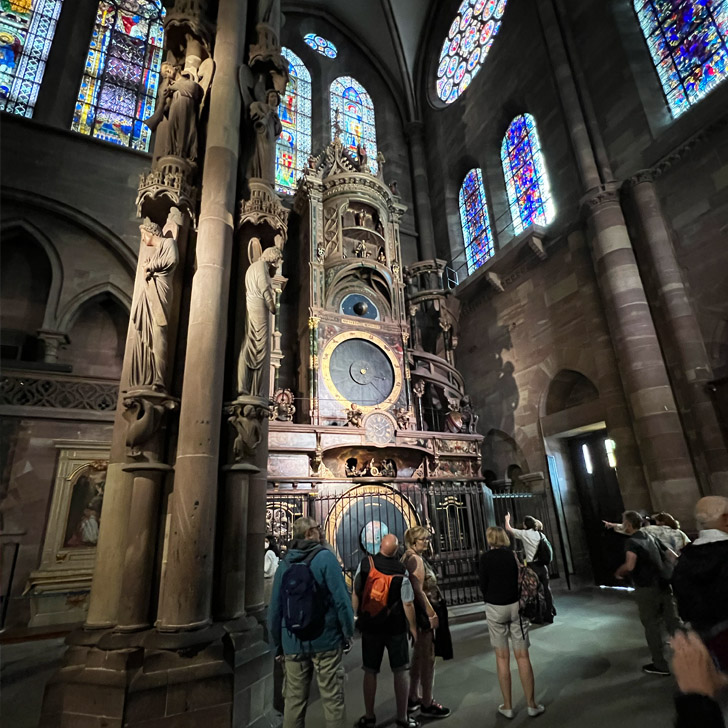
Enough with the cathedral, let’s continue our Strasbourg sightseeing tour. If you want to see Strasbourg in a day, you’ve got to keep moving.
As you exit the Cathedral, you are on the Place de la Cathedrale (Cathedral place) with its cobbled streets and beautiful timbered houses.
To your right you can see the Maison Kammerzell (Kammerzell House), one of the best-preserved medieval timber houses. Originally a merchant’s house, Maison Kammerzell now houses a restaurant and a small hotel.
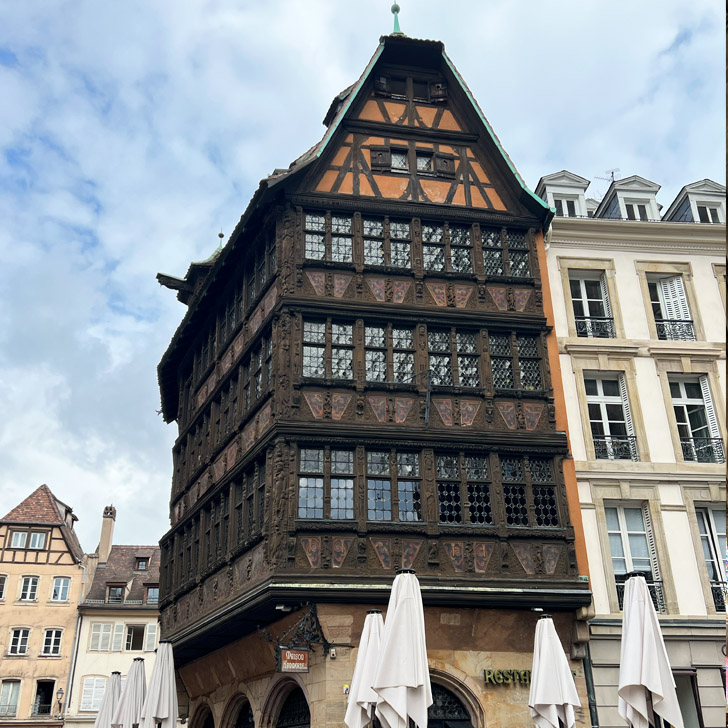
Next on our tour of what to see in Strasbourg is the Palais Rohan to the south of the Cathedral.
Originally the residence of the House of Rohan, the palace now houses three museums: the Archaeological Museum, the Museum of Fine Arts and the Museum of Decorative Arts.
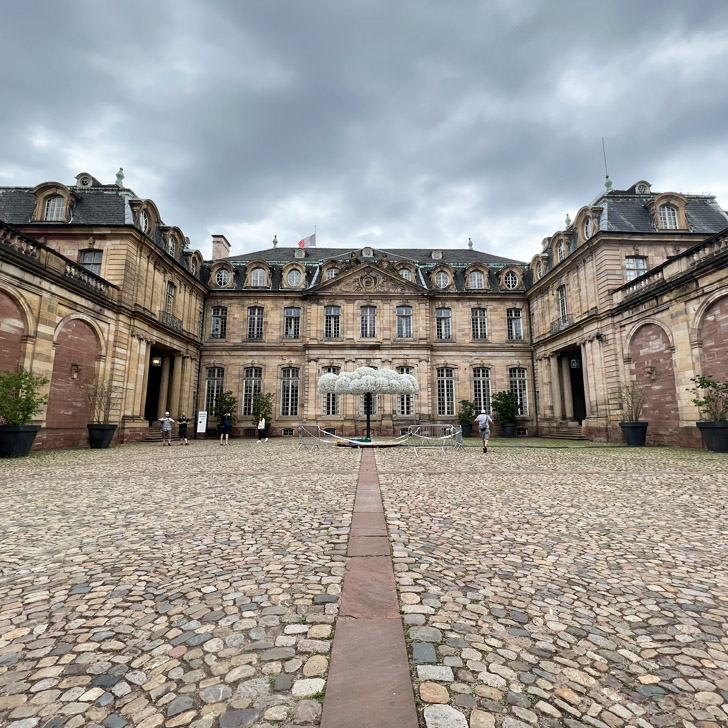
As we only had a few hours in Strasbourg, we didn’t visit any of the museums. Instead we only looked around the courtyard (and its light bulb art installation), before heading down to the River Ill, to continue our Strasbourg sightseeing tour.
What to see in Strasbourg: the bridges
We crossed the river and walked along the south bank for a while.
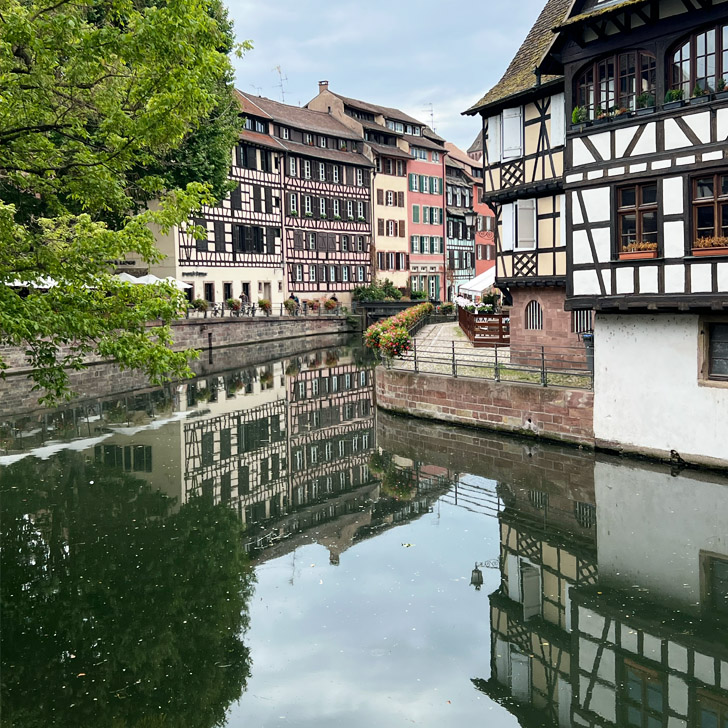
After another coffee, we arrived at the Ponts Couverts (the covered bridges) and the Barrage Vauban (the Vauban Dam).
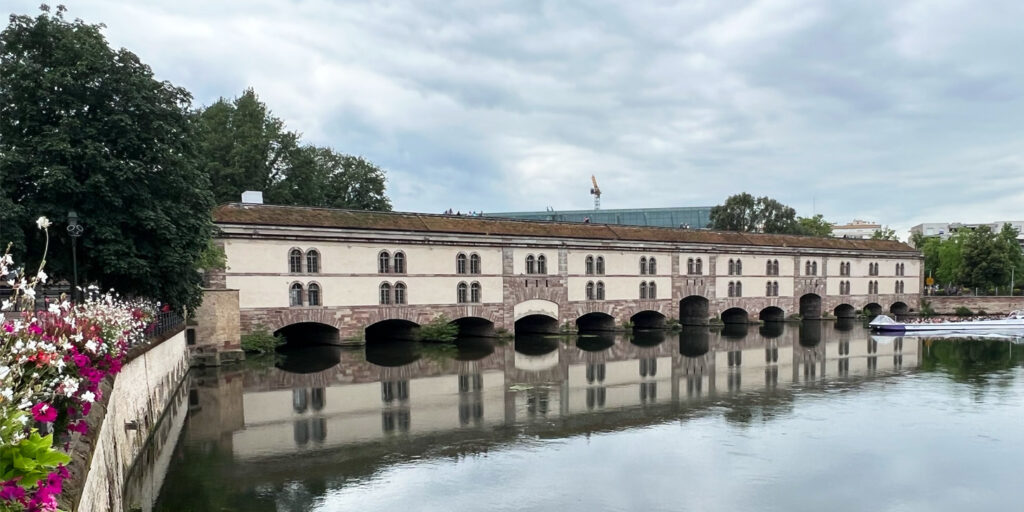
The Barrage Vauban is an impressive building, spanning 120m across the Ill. The dam was originally built as a defence mechanism, not for river navigation. In case of an attack, the dam could be closed to raise the level of the Ill. And once the gates would open, the water would flood the lower parts of Strasbourg, washing away any attackers.
Luckily, nowadays no one plans on flooding Strasbourg any time soon. Instead, you can use the Vauban Dam as a bridge across the river. It has two walkways: an open one on top, accessible via lift on one end and via stairs on both ends. And a internal, covered walkway, through the 13 arches. We did both. We walked across on top, then came back via the enclosed walkway. Within the arches, you will see a collection of statues and gargoyles, which are replicas of the ones at Strasbourg Cathedral and Palais Rohan.
Back where we started, we walked the few steps to the Ponts Couverts, another bridge spanning the River Ill (there certainly is no shortage of bridges in Strasbourg).
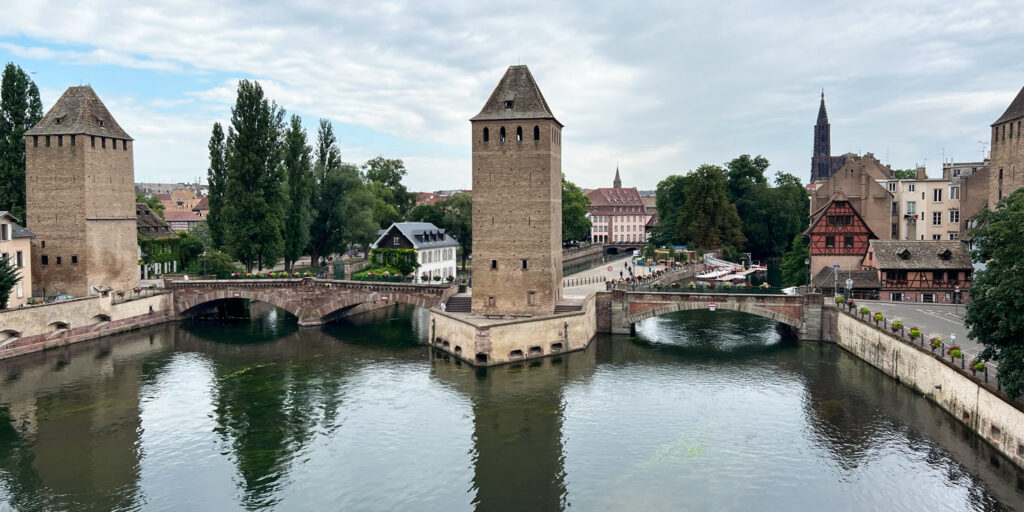
The Ponts Couverts are actually a set of three bridges and four towers, spanning the four smaller channels of the River Ill.
The name ‘Covered Bridges’ is a little confusing, as there is no roof on those bridges. And to be honest, when first approaching, I automatically mistook the Vauban dam for the Ponts Couverts. As that very clearly is a covered bridge.
Back in the day when the Ponts Couverts were built (in the 13th century), the bridges were covered with wooden roofs. These were eventually removed in the 18th century, but the name stayed.
What to see in Strasbourg: la Petite France (little France)
In between the four channels of the River Ill lie small islands, knows as Little France. We had a quick walk around and admired the cute and colourful houses along the water. Before we eventually went back onto the Grande Île.
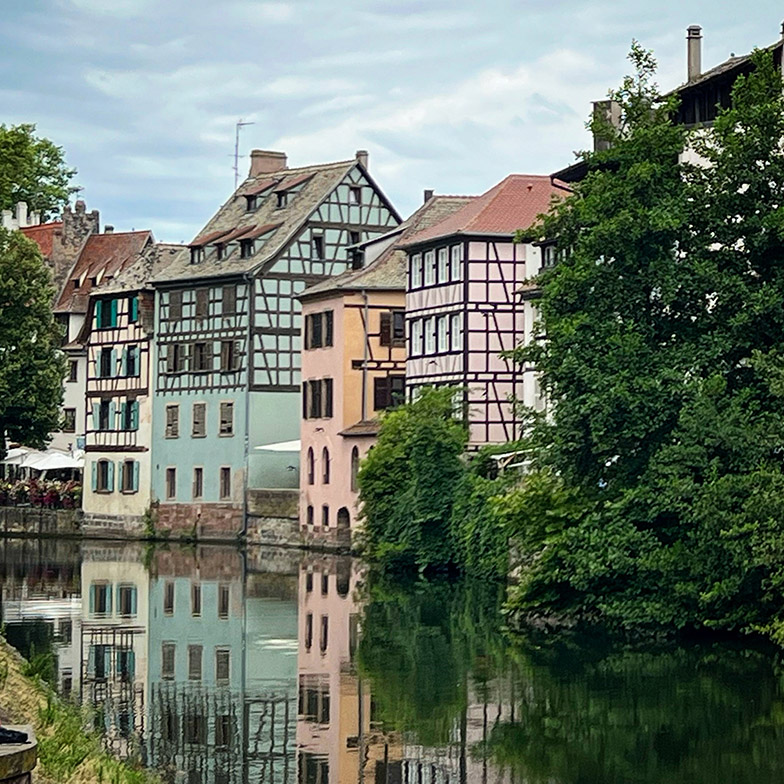
Local food in Strasbourg
As it was past midday by now, we decided to take a little break and get some lunch. With only one day in Strasbourg, we were eager to have some traditional food. So rather than a burger chain or sandwich bar, we went to Restaurant Lohkäs, a traditional Alsatian restaurant. The fact that it also came with a cute little shaded outdoor seating area was a big bonus.
There are a few traditional Alsatian dishes that you can try when sightseeing in Strasbourg. We opted for an Alsatian Flammekueche (tarte flambée) as well as Fleischkiecheles à la crème (meatballs in a creamy sauce), served with spaetzle.
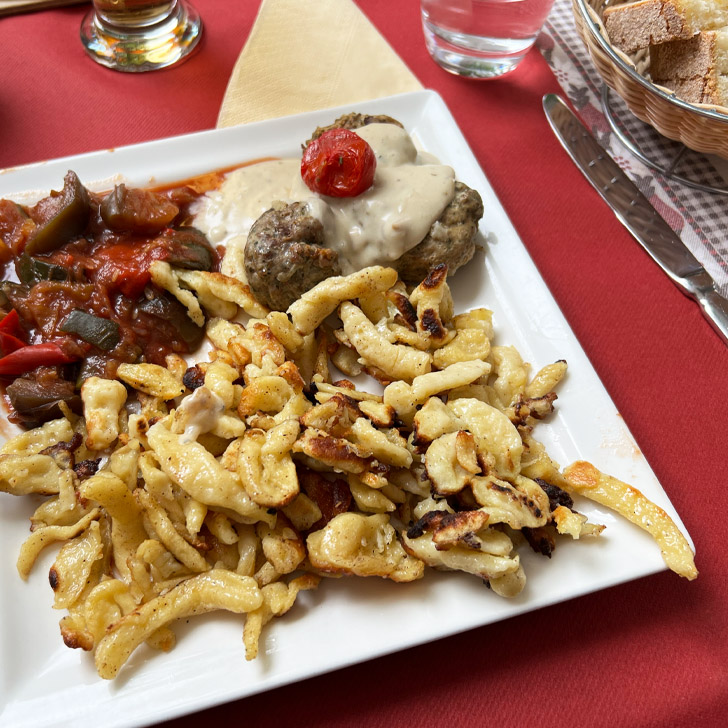
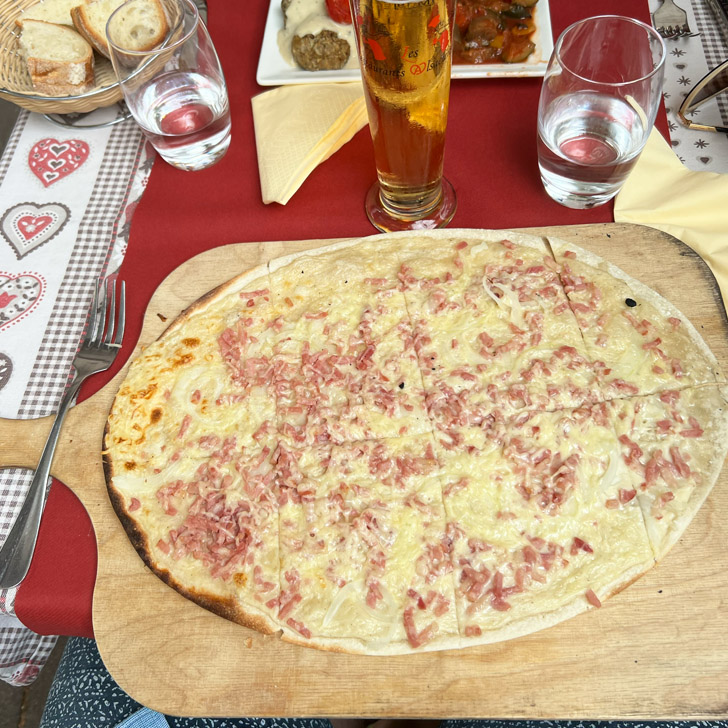
I was considering the Choucroute Alsacienne, Sauerkraut Alsatian style. Served with different local sausages, salted and smoked brisket and salted neck. But in the end, I didn’t order it, as I was a little unsure about the brisket and neck bits.
Being so close to the German border, some of the local dishes compare to the regional dishes from my home area. And same for the wines. Palatinate and Alsace both have large vineyards and similar soil and sun. After all, they are directly bordering, divided by the River Rhine. So yes, I had a glass of Alsatian Riesling with my lunch and it was just as yummy.
What to see in Strasbourg: Shopping
Anyone who knows me won’t be surprised that I also managed to squeeze a little shopping into my Strasbourg day trip. Wherever I visit, I love mooching the local shops, not just for fashion, but also for local delicacies. And sure thing, not only did I buy myself a dress and blouse at Galleries Lafayette (ever since my frequent Paris trips, I am in love with Galleries Lafayette and their fashion range), we also bought some local cheese and cured meats to take home.
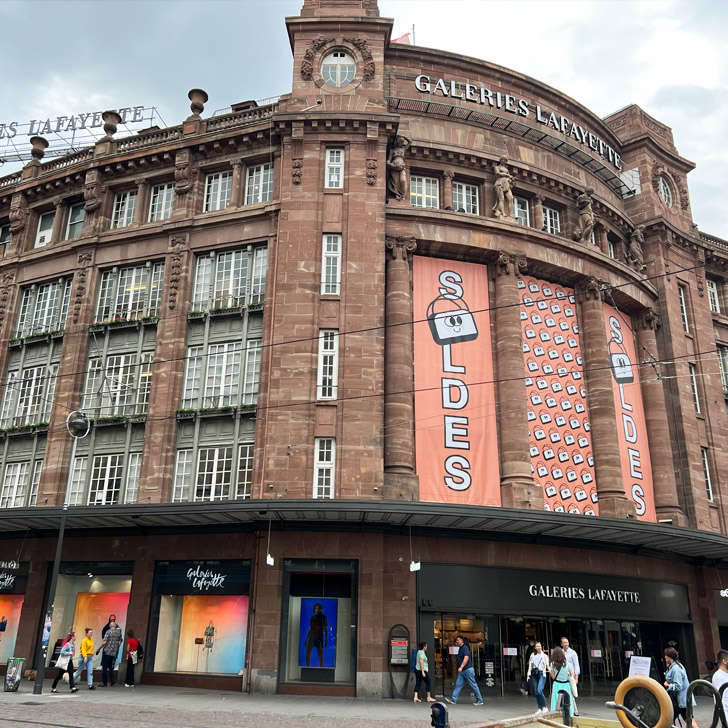
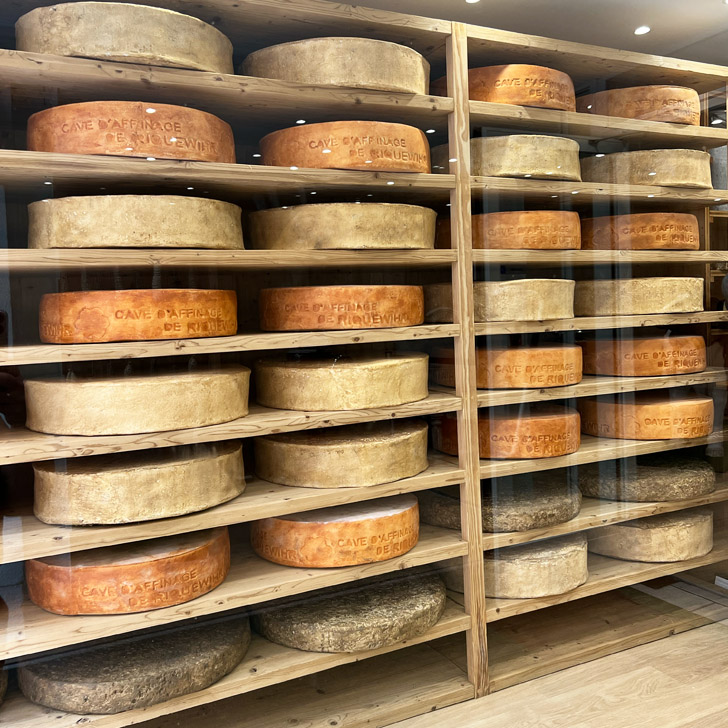
After about six hours of exploring Strasbourg, we eventually called it a day and drove back home. We enjoyed our day out and I would happily come back. Maybe next time in the run up to Christmas, as Strasbourg has an amazing Christmas market around the Cathedral. And you all know how much I love a good Christmas market. The one in Strasbourg definitely holds up in comparison to the German ones or the Christmas markets in Vienna.
I hope you enjoyed my little overview of what to see in Strasbourg. Tell me, have you ever been to Strasbourg? Would you consider a day trip to Strasbourg?
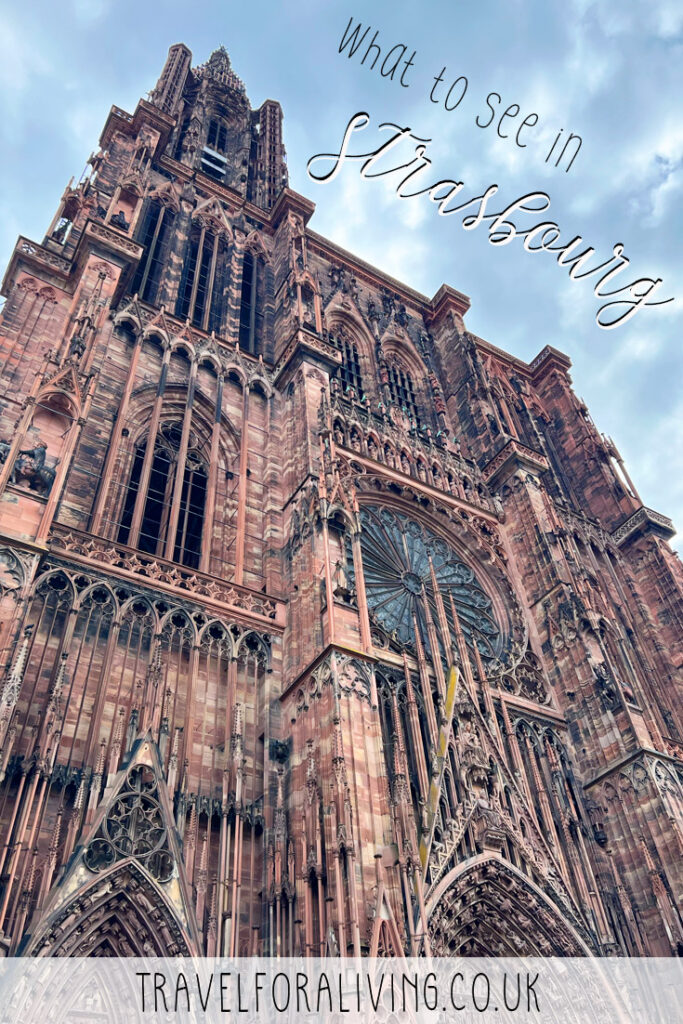
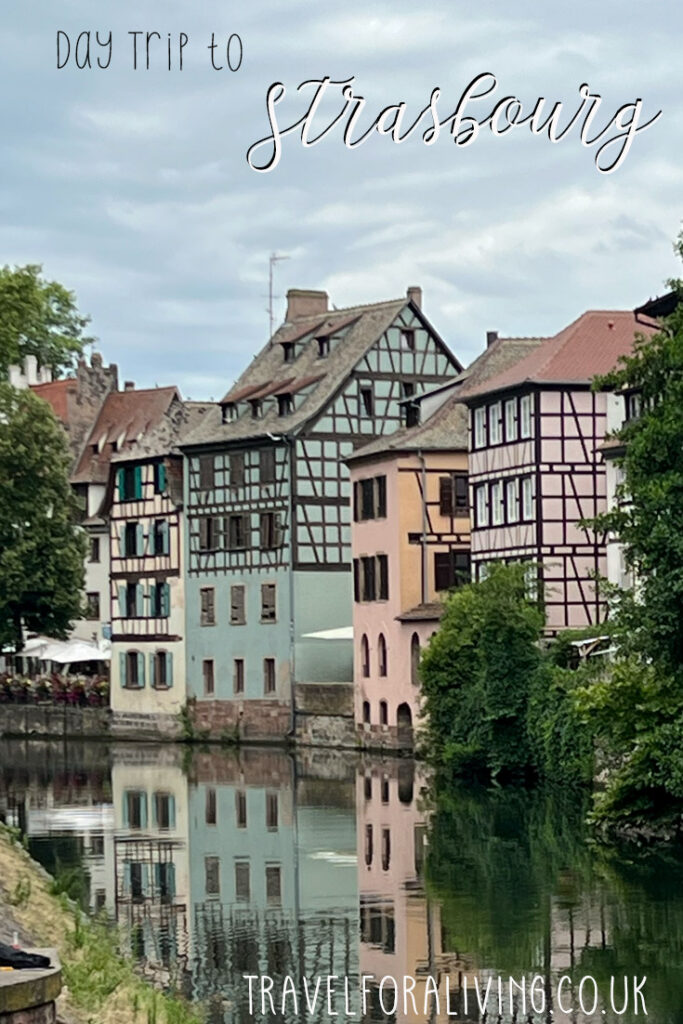

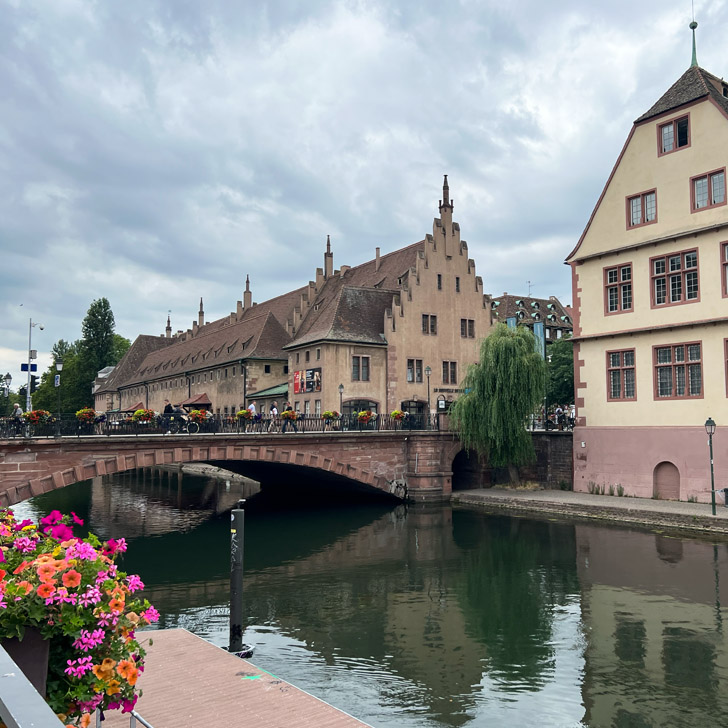
Heide Sinden
If you go to the Christmas Market I’ll come with you
Two Nights in Copenhagen - Travel for a Living
[…] 1955. Reading about it at City Hall, it turned out that Jens Olsen was actually inspired by the astronomical clock in Strasbourg, that he saw and intensely studied in younger years. Sadly, Jens Olsen didn’t live to see his […]
13 Things to See + Do in Palatinate (Germany) - Travel for a Living
[…] To the South it borders with France (you might remember that I told you last year that Strasbourg and the Alsace were a short drive from my parents). To the North, Palatinate borders with […]